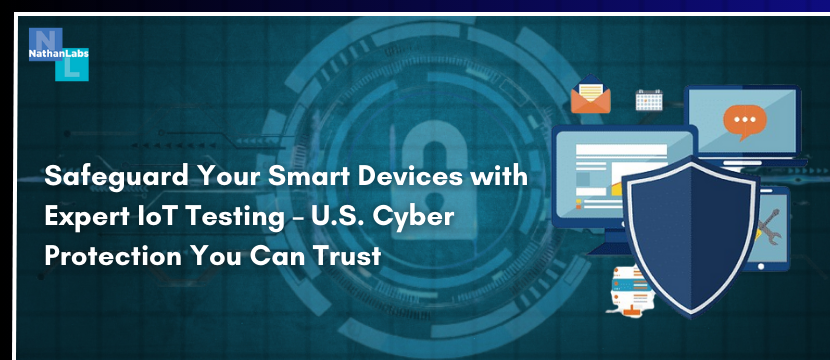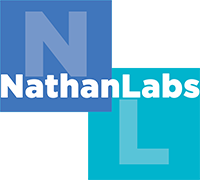Blog
IoT Testing in the USA: Protect Your Devices from Cyber Threats

IoT Testing involves examining all parts of Internet of Things devices alongside their networks and systems in order to validate their functionality alongside their performance together with their security measures. It is essential to secure IoT devices because they connect to other devices and systems over the internet through their network communications.
An examination of IoT devices needs to evaluate both security measures along with network data flow and protection methods and standards compliance. Testings assess device sensitivity to outside invasions as well as data processing capabilities and interconnection with IoT systems.
The Importance of IoT Security Testing in the USA
The growing presence of IoT devices in healthcare together with manufacturing and transportation sectors in the USA requires organizations to focus first on security measures. The core objectives that justify IoT testing in USA consist of the following list:
1. Rising Cybersecurity Threats
The increase of IoT devices creates more entry points which hackers can exploit. Various IoT devices lack fundamental security features hence hackers take advantage of these weaknesses. The vulnerabilities found in IoT devices enable unauthorized users to gain access to networks and steal data which can further result in destructive attacks on essential infrastructure. The absence of testing lets businesses become vulnerable to major security breaches that potentially affect their operations.
The analysis of IoT vulnerabilities through testing helps businesses understand ways to enhance IoT system defenses against attacks. Businesses who perform security testing on a regular schedule reveal potential weaknesses which help them protect themselves from malicious actors.
2. Ensuring Data Privacy and Compliance
Internet-connected devices acquire and distribute confidential information that contains personal details together with medical histories and financial account data. IoT devices represent appealing opportunities for cybercriminals who want to take advantage of the collected data. Businesses operating in the USA must follow specific data privacy standards through two major regulatory examples including Health Insurance Portability and Accountability Act (HIPAA) and California Consumer Privacy Act (CCPA).
The evaluation of IoT devices and systems through testing makes sure they meet legal requirements through verification of data encryption techniques and secure data communications protocols and proper access restrictions. Businesses that successfully fulfill data privacy standards both avoid legal trouble and gain customer loyalty because customers rely on secure devices.
3. Performance and Reliability Assurance
Effective IoT device functionality in their target environments depends on reliable operation while dealing with substantial amounts of data. The real-time operations of IoT devices in healthcare and industrial automation systems and smart cities lead to critical performance problems which result in major consequences.
Performance tests are essential components of IoT testing because they verify device capacity to manage high loads together with their performance under various environmental situations along with their ability to stay operational while used heavily. Organizations achieve better reliability for their systems which minimizes operational failures and creates superior user interactions.
4. Safeguarding Critical Infrastructure
The integration of IoT devices becomes more prevalent in key infrastructure elements which include power grids with their transportation systems and industrial machinery. Security system breaches of these networks produce devastating results which endanger public welfare and trigger financial losses together with business reputation damage.
The identification and resolution of system vulnerabilities becomes possible through complete testing of IoT security measures. Continuous testing of IoT devices ensures their protection from modern cyber threats because it helps defend critical infrastructure while ensuring public safety.
Types of IoT Security Testing
Security testing for IoT networks proceeds through different evaluation techniques which detect vulnerabilities in IoT hardware and connected systems. The process includes various testing elements which consist of:
1. Vulnerability Assessment
The main goal of vulnerability assessment is to locate issues affecting IoT hardware together with software elements within the system. Testing consists of examining standard weaknesses which include password vulnerabilities and unsecured programs and absent cryptographic measures. Understanding these weaknesses leads businesses to perform repairs on vulnerabilities before their use by attackers.
2. Penetration Testing
The objective behind penetration testing involves running realistic cyberattacks against IoT devices and systems to measure their security resistance capacity. During penetration testing engineers use methods that duplicate hacker approaches to monitor devices’ reactions during attacks. Security enhancements for devices emerge from penetration testing as it detects concealed security weaknesses.
3. Network Security Testing
Since IoT devices connect through networks they become vulnerable to different network-oriented attacks. The assessment of IoT devices uses network security testing to examine both communication protocols and encryption methods along with network protection elements for defense against illegal network intrusions. The testing of network components helps businesses maintain device security levels throughout data transfers.
4. Firmware and Software Testing
Functionality of IoT devices depends on their necessary firmware and software programs. The evaluation of firmware and software components guarantees businesses that their devices remain free from bugs as well as vulnerabilities and out-of-date components that could undermine security functions. The testing procedure includes assessing software vulnerabilities and maintaining its updates to defend against new security dangers.
5. Compliance and Regulatory Testing
Security testing must include validation for the compliance of data-processing IoT devices against privacy law requirements and data protection regulations. A compliance testing process verifies whether IoT devices fulfill the prescribed security and privacy requirements stated by different regulatory agencies like HIPAA and GDPR. Businesses use this testing to prevent legal troubles while keeping their customer relationships based on trust.
Benefits of IoT Testing for USA Businesses
The complete IoT testing system provides multiple advantages to businesses specifically in the United States because IoT security concerns take priority. Businesses in the USA can gain advantages from IoT testing through the following elements.
1. Enhanced Security
IoT testing allows businesses to locate system vulnerabilities which enables them to establish measures to prevent cyberattacks together with data breaches and other security threats. Businesses maintain security superiority against new threats by conducting frequent checks of their security protocols.
2. Regulatory Compliance
Businesses operating IoT devices must fulfill both local and international privacy standards because these devices process sensitive data. Testing for IoT ensures devices abide by their specified requirements thus safeguarding business operations while securing client information from legal consequences.
3. Increased Customer Trust
By proving the security reliability of IoT devices businesses build better relationships with clients and partnership partners. Candidates who earn security certifications and pass tests will create competitive advantages through their products thus attracting customers to choose them rather than competitors.
4. Improved Device Performance
Testing IoT devices through IoT testing enables the assurance of maximum device performance across different operational environments. Companies gain enhanced device reliability together with reduced downtime by minimizing early detection of performance problems.
